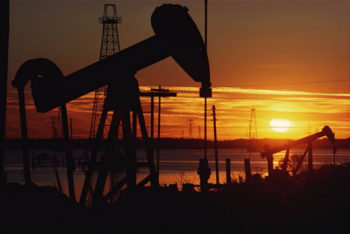Rigged: Access to drill
Secretary Zinke has already announced that he plans to make oil and gas development the “dominant” use of America’s public lands. One could be forgiven for thinking that was not already the case. Oil and gas companies have already leased 27.2 million acres of public lands – a land mass nearly equal in size to the State of Tennessee. And there are over 94,000 wells on public lands that can produce oil or gas – almost twice as many as at the end of the Reagan Administration. It should come as no surprise, then, that record amounts of oil now flow from America’s public lands.
The billions in profits that oil and gas companies are making from drilling on our public lands is not enough for the industry and its allies in this administration. They want even greater access and fewer protections to grow their bloated bottom-lines. And make no mistake – they want to lease and drill every parcel of public land they possibly can, including right next to national park visitor centers.
Access for private developers is indeed a problem – but not in the way that industry wants you to think. The real problem is too much access and the threat that industry’s relentless greed poses to our national parks, hunting and fishing grounds and drinking water supplies.
Drill, Maybe, Drill
Oil and gas companies are currently sitting on a record-number of unused drilling permits – nearly 8,000 are idle. That’s more than three years’ worth of drilling, based on the average number of wells drilled every year on public lands (about 2,450). The Bureau of Land Management (BLM) could literally stop issuing drilling permits tomorrow, and industry would be drilling permitted wells until 2022. But that would also require a dramatic and highly unlikely reversal in energy markets, the single biggest factor driving public lands drilling. And even the Administration – despite its fevered rhetoric on energy “dominance” – is quietly projecting an “overall decline” in public lands drilling.
The (F)leasing of American Taxpayers
Oil and gas companies have also stockpiled over 16,000 unused oil and gas leases covering about 14.4 million acres of public lands. Many of these unused leases are speculative. They will never be developed and were purchased by land speculators trying to make a quick buck.
Taxpayers lose no matter how you cut it. Speculative leases are frequently purchased at rock-bottom prices – for as little as $2.00/acre – which means that taxpayers are likely losing money, when the costs of issuing and administering leases are factored-in. There are also significant opportunity costs to these leases, as BLM frequently foregoes other income-generating activities – like hunting, fishing and outdoor recreation – when oil and gas leases are present.
This Land Isn’t Your Land
According to one recent analysis, over 90 percent of public lands are open to oil and gas leasing. No other industry enjoys so much access to our public lands, as nearly any parcel of publicly-owned land is up for grabs. In recent months, this has included lands surrounding national parks, within farms and ranches and encompassing drinking water wells. Opposition to these efforts is growing, including from conservative western officials, businesses and ranchers. However, given just how much land is now accessible to the industry, the pressure to move forward with leasing, even in the face of widespread public opposition, will only intensify.
The effects of turning our public lands over to the oil and gas industry can be dramatic. For example, in the 1990s, BLM leased significant portions of the landscape surrounding Dinosaur National Monument for oil and gas development. As companies began drilling wells, visitation to the monument declined by more than 40 percent.
Thousands upon thousands of unused leases and drilling permits certainly doesn’t sound like a shortage of access. On the contrary, it shows that the oil and gas industry – to the great detriment of American taxpayers – has more access to our public lands than they know what to do with. Unfortunately, instead of recognizing and acting on this simple truth, the administration is working even harder to turn our iconic landscapes that drive the outdoor economy over to the oil and gas industry.
